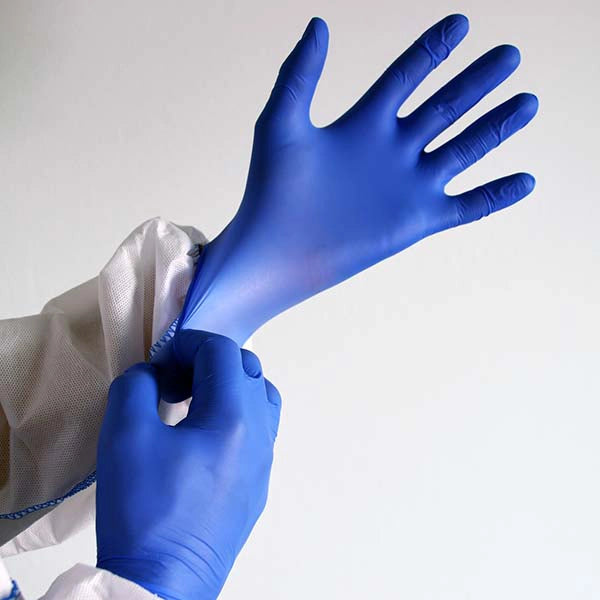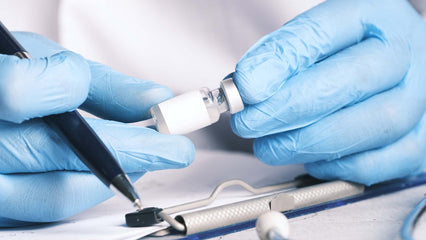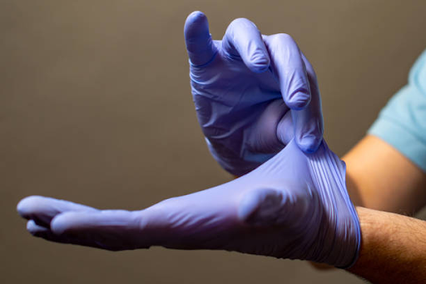The Humble Beginnings of Rubber Glove
In 1889, Dr. William Stewart Halstead—the first chief of surgery at Johns Hopkins Hospital in Baltimore, Maryland—invented disposable gloves after being requested by his nursing assistant. Caroline Hampton, the nursing at the hospital, complained that she was getting rashes on her hands from the chemicals she handled during surgical procedures.
Dr. Halsted used carbolic acid and mercuric chloride, a combination of antiseptics, during his surgical procedures. Hampton, acting as Dr. Halsted's scrub nurse, was required to work with these chemicals on a regular basis and consequently developed severe contact dermatitis on his hands.
To protect Hampton's hands from the antiseptic solution being used during surgery, Dr. Halsted approached the Goodyear Rubber Company to create a pair of protective gloves. After several prototypes, Dr. Halsted and Goodyear created the first pair of rubber gloves.
Hampton was so pleased with the gloves that Dr. Halstead ordered from Goodyear that he soon had his entire surgical staff wearing them during operations. The couple married in June 1890, following his presentation of her with a pair of rubber gloves made to fit her hands.
Other medical staff and surgeons soon began wearing rubber gloves as well, and their use became widespread.


Wearing A Rubber Glove for Protection
Even though the gloves were widely accepted by Halstead’s team because they allowed for greater dexterity, it wasn’t until later that they realized the added protection they gave to the wearer’s hands against germs.
When Dr. Halstead introduced his gloves to the medical community, the doctors did not yet understand the importance of cleanliness in their profession.
The germ theory of disease was proposed in 1881 by Louis Pasteur, stating that certain diseases were caused by microscopic organisms. The medical industry began to recognize the value of disposable gloves soon after this theory became widely accepted.
Before the invention of the disposable surgical glove, a patient's mortality rate during surgery was 50 percent, with many deaths from germ transference between doctor and patient.
After it was proven that germs cause disease, the use of disposable gloves during surgery procedures increased significantly. The practice quickly became compulsory.
The Rise of Sterile Rubber Gloves
In the medical field, it is crucial to keep instruments and medical gloves clean. In recognizing this fact, Joseph Lister instituted the use of sterile techniques in surgery. In 1894, Joseph Lister discovered that rubber gloves could be sterilized with a chemical called carbolic acid.
The success of Joseph Lister's antiseptic approach to surgery led to a drastic decline in deaths of surgery patients due to infection. By the early 1900s, sterile rubber gloves had become a standard operating procedure for most surgeons.
Despite Lister's process, the habit of using a single pair of gloves for multiple patients continued well into the 1960s. It was not until 1965 when the use of sterile disposable gloves further progressed.
The Ansell Rubber Company manufactured the first disposable glove in 1964. The company adopted gamma irradiation as a cheap way to sterilize the disposable gloves it manufactured. This method was soon adopted by other companies in the rubber industry, and it remains the primary way to sterilize disposable gloves today.
The introduction of radiation sterilization technology made it possible for Ansell to manufacture disposable rubber gloves, rather than reusable pairs. Surgeons could discard used gloves and don new sterile ones, thereby lowering the chance of the infection spreading.
Establishment of Disposable Glove As PPE
In March 1992, the Occupational Health and Safety Administration’s Bloodborne Pathogens Standard was published. The rule required employers to provide personal protective equipment, including disposable gloves, to workers who would come in contact with bodily fluids. This requirement was implemented to protect workers from exposure to HIV, which had increased public awareness around that time.
The Discovery of Nitrile Disposable Gloves
Up until the 1990s, disposable gloves were made of rubber. However, when it was discovered that some chemicals could penetrate the protective barrier of rubber latex, this material was replaced by other types of synthetic materials.
In 1996, Karen Wetterhahn died from mercury poisoning after prolonged exposure to elemental mercury through her work with the chemical. Though she was wearing latex gloves during her experiments, the gloves were not thick enough to prevent leakage of the toxic substance into her body.
Starting in the 1990s, nitrile disposable gloves became available to the public. These gloves, made from long-chain monomers derived from acrylonitrile and butadiene, provide more chemical resistance than latex gloves. Their chemical resistance makes them a good choice for medical settings where patients could have allergies.

Adding Powder for Ease of Use
Surgeons, however, complained of the difficulty of putting on the latex gloves. The natural close fit of the gloves made them difficult to remove without discomfort or tearing.
The industry initially responded to complaints about donning, doffing, and slipping on latex gloves by adding lycopodium spores to talc, to ease the process. However, researchers discovered that lycopodium spores were toxic to humans, causing lung damage in some cases. Manufacturers therefore continued using talc-only lubrication for donning and doffing.
For 40 years, talc was used as an additive in surgical gloves, until it became apparent that the talc caused complications for patients and impaired their recovery, and during World War II the practice of adding talc to surgical gloves was replaced with starch.
Starch is used as a binder to make the latex glue stick together. The starch prevents the latex from irritating skin, which makes latex gloves safer than other kinds of gloves. The process has been refined so that each glove can now be liberally coated with latex using an automated gluing process.




